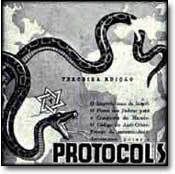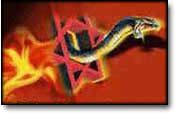Brainwashington Post
“It’s subsiding,” says a longtime Jewish activist. He’s referring to the
firestorm surrounding the Chuck Hagel nomination. It came at a critical
moment, in the weeks leading up to the American Israeli Public Affairs
Committee (AIPAC) policy conference and when the Israeli government is
not yet formed and daily news reports confirm Iran is forging ahead with
its nuclear weapons program.
Privately and publicly
hammered for remaining on the sidelines during the Hagel fight, AIPAC
officials insist that their decision was the correct one, the only way
to continue a productive relationship with a White House that’s
super-sensitive to criticism and to hang onto Democratic members who are
supporters of the president.
They are not oblivious to a problem we’ve remarked on at Right Turn.
They, too, see the numbers in Democratic support for Israel. AIPAC has
attempted to do outreach to minority communities, on campus and with
young professionals, hoping to solidify support in these Democratic
demographic groups. But anti-Semitism rages on campus, and the poll
numbers speak for themselves. Officials are keeping up a good front,
putting their hopes in a new generation of Democratic leaders. And to be
blunt, the crop of 2016 Democratic candidates (such as Hillary Clinton
and Vice President Biden) are considered to be far less antagonistic
toward Israel. Still, that leaves current support for Israel lopsided
electorally.
An AIPAC official authorized to speak only on background asserts that
the attendance at the conference beginning Sunday will exceed or meet
last year’s number (13,000). Biden will speak, and Israeli Prime
Minister Benjamin Netanyahu, tied up with forming a government at home,
will speak by video. Despite his huge legal and political problems, Sen.
Bob Menendez (D-N.J.), who chairs the Senate Foreign Relations
Committee and has been a frequent sponsor of pro-Israel legislation,
will also speak.
The official tells me that from AIPAC’s perspective, “There is
immense instability in the region. Increasingly, Israel is the island of
stability.” There will be legislation introduced this year supported by
AIPAC that aims to deepen the U.S.-Israel relationship by formalizing a
“strategic partnership.” Is this more than putting a prom dress on a
cranky administration? AIPAC insists this will be an attempt to broaden
the relationship on economic matters and in all areas of public policy,
from economics to homeland security to energy.
But this and every other issue in the region, the official says, are
not top priorities. “This is all overshadowed by the Iranian threat,” he
says. AIPAC is candid that the Iranian nuclear weapons threat has
“accelerated.” So is the policy of sanctions and engagement a failure?
He hedges that it has “complicated” and possibly slowed Iran’s nuclear
weapons program. “But has it stopped it? No. We have no illusions,” he
tells me.
In fact, as Michael Makovsky and Blaise Misztal explain, Iran has managed to stay ahead of the nuclear weapons game with the West:
Iran has not slowed its program all that much. The 10
kilograms of 20 percent enriched uranium it recently removed is a much
smaller quantity than it had previously removed and only delays its
arrival at Israel’s red line by a month. This removal appears directly
geared toward the upcoming negotiations: to provide breathing room for
talks to proceed – whether because Iran is interested in a negotiated
solution or merely because it sees diplomacy as yet another stalling
tactic – but not much more.
The more complicated answer involves an understanding of Iran’s
growing nuclear infrastructure. It produces 20 percent enriched uranium
at two facilities: the above ground Natanz Pilot Fuel Enrichment Plant
and the underground Fordow Fuel Enrichment Plant. But the new
centrifuges are being installed at the Natanz Fuel Enrichment Plant,
which only produces, so far, 3.5 percent enriched uranium. Thus, these
advanced centrifuges will not directly affect the growth of Iran’s 20
percent enriched uranium stockpile, nor the date when it crosses
Israel’s red line. They will, however, hasten Iran’s breakout window,
because if Iran ever attempts to produce highly enriched uranium (HEU)
for a nuclear weapon, it will likely do so at Natanz, its largest
enrichment facility. . . .
It is delaying crossing Netanyahu’s red line [20 percent
enrichment] but shrinking the distance between that threshold and
nuclear weapons capability.
The administration made matters worse by conceding that Iran has a
right to a “peaceful” nuclear program and by insisting that it is fine
to allow Iran to enrich up to the 20 percent mark. Former ambassador to the United Nations John Bolton warns:
Isn’t it better to stop Iran from getting to 20%, the reasoning goes, even if it means conceding that they can enrich to 4%? No. Mr. Obama’s negotiators are playing with numbers they don’t really understand. Their crude physics is seriously flawed, based on a misunderstanding of the work required to enrich uranium to weapons-grade levels. As a result of the misreading, the negotiators’ military-political conclusions are erroneous.This is because, as Bolton notes, the hard part is getting up to the 4 percent level (“the amount of additional work required to increase either 4% or 20% enriched-uranium stockpiles to weapons-grade levels is of little consequence. The Non-Proliferation Education Center estimates the difference between the two reactor-grade levels to be only about three weeks of further enrichment for enough weapons-grade uranium for one nuclear device.”)
So we’ve given Iran a free pass below the level of 20 percent enrichment, Iran has sped up its enrichment process, and to boot, it has now begun, according to news reports, pursuing plutonium enrichment. The Post recently reported that “Iran plans to begin using an existing medical research reactor to test fuel rods for a heavy water reactor that Iran has been building in Arak for years. Western officials say the reactor could become operational next year. When it does, Iran would have the ability to produce plutonium as well as enriched uranium, providing it with a second pathway to a possible nuclear weapon.”
In other words, sanctions aren’t working, but Iran’s mechanisms for speeding up attainment of nuclear weapons sure are.
To that end, AIPAC will support a Senate resolution to be co-sponsored by Menendez and Sen. Lindsey Graham (R-S.C.) stating that if Israel is compelled to act, the United States will afford complete support to the Jewish state. Some might see this as tacit recognition that there are doubts as to the U.S. willingness to live up to its promises to use all options to prevent Iran from acquiring a nuclear weapons capability. Others would call it “covering all the bases.”
President Obama has sent mixed messages to Iran. He occasionally repeats that “all options are on the table.” However, the United States pulled out of Iraq, is leaving Afghanistan early, hasn’t ousted Iran’s Syrian ally, Bashar al-Assad, just confirmed Hagel and is madly cutting defense spending. AIPAC has had no role in any of that, so it is reduced to working on the message it can influence. (It is not lost on knowledgeable observers that this is like looking for your keys under the lamppost because that it where the light is.)
The AIPAC official said his group is looking for unequivocal statements from the president in the United States and especially on his trip to Israel that America will not allow Iran to get a nuclear weapon. Period. In Israel, the official says, AIPAC hopes that the president will reiterate his statement that the U.S. is committed “to prevent Iran from going nuclear.”
One really has to be a glass-half-full person to see AIPAC’s role as anything other than diminished under the Obama presidency. It seeks to nibble around the edges of administration policy and rhetoric, but the president overtly snubbed it, the Jewish community and Israel with the Hagel nomination. Moreover, the administration’s priorities persistently conflict with AIPAC’s. Secretary of State John Kerry is talking “peace process” while that doesn’t make the top issues for AIPAC presently.
Sure, AIPAC still publicly supports a two-state solution, but it has also been candid that at present Israel lacks a peace partner. Moreover, the administration “linkage” formula has been obliterated by recent events in the Middle East (the Arab spring, the overthrow of governments, the spread of jihadist terror) that have nothing to do with the Israeli-Palestinian conflict.
AIPAC can still fill a ballroom, as we will see on Sunday. However, its ability to stem the Democratic Party’s disaffection from Israel, secure the U.S.-Israel relationship and influence U.S. policy on the Iranian threat is in doubt like never before. If it can’t do those things it is hard to see what purpose it serves.
http://www.washingtonpost.com/blogs/right-turn/wp/2013/02/28/aipac-and-iran-in-the-obama-hagel-years/
![[9_10_s22.jpg]](https://blogger.googleusercontent.com/img/b/R29vZ2xl/AVvXsEjTXnQay9wzz0E6nVHrVhaHKoq_zYXDqZjijHlNDQzj90MZzInrCuVX4ciFYCiBfZ7lhlgr2bBhhnl7ddWbhdih5JbXjQYbA605TNyiq046bQqjG2A4S-nHTmh1VBTQSG6tmc23wq47QQ/s1600/9_10_s22.jpg)




No comments:
Post a Comment